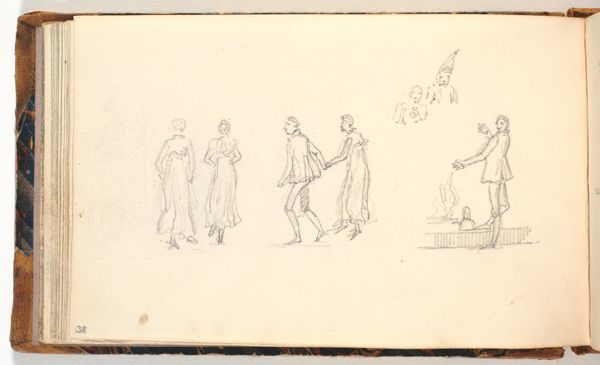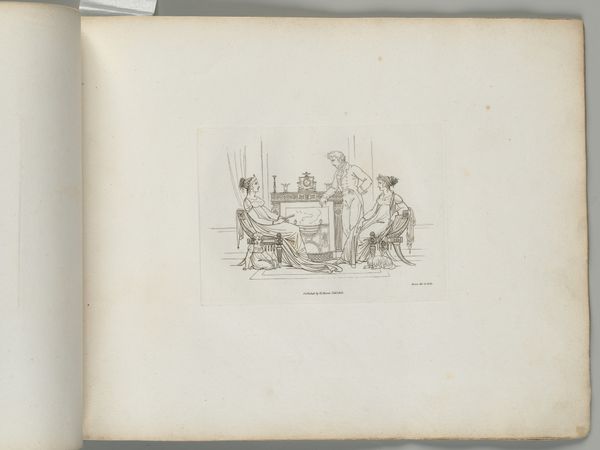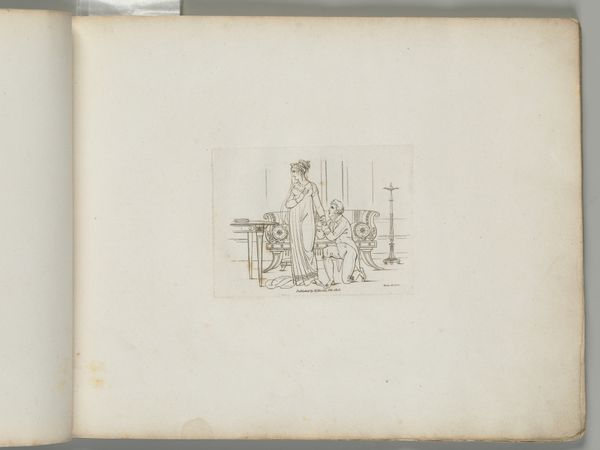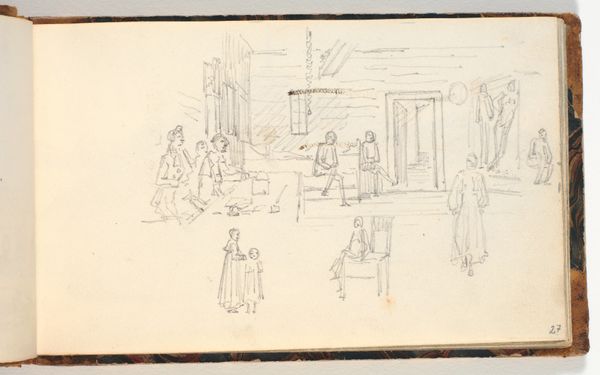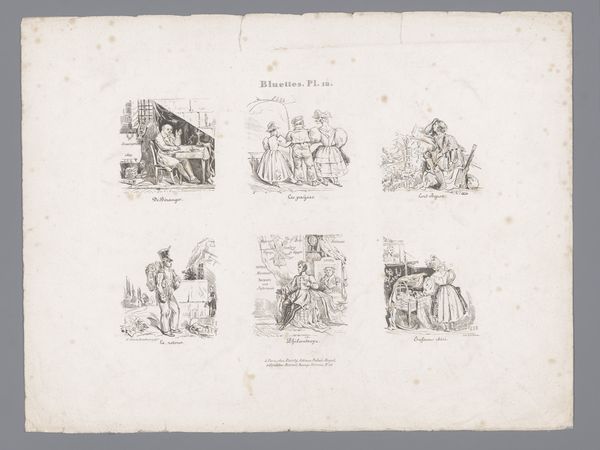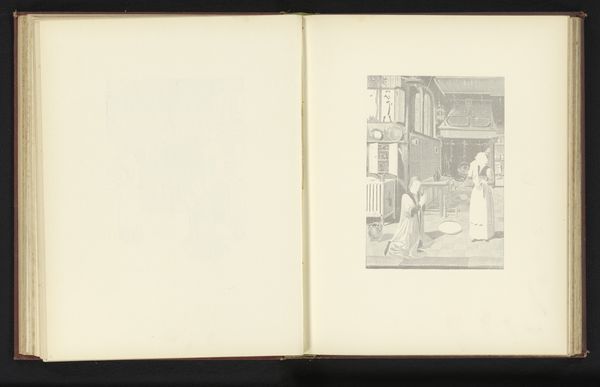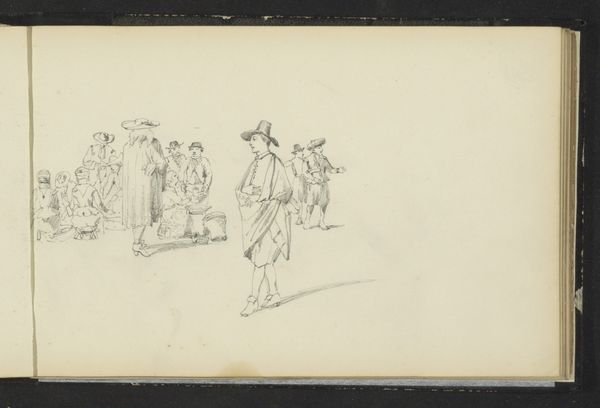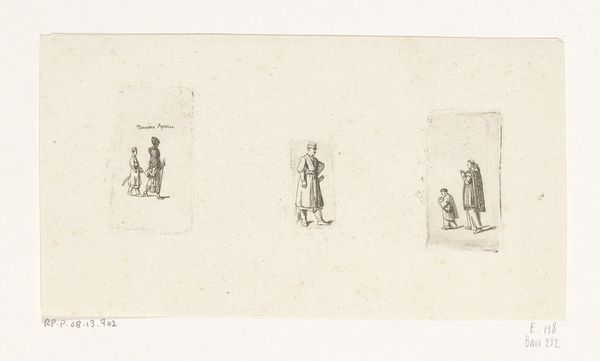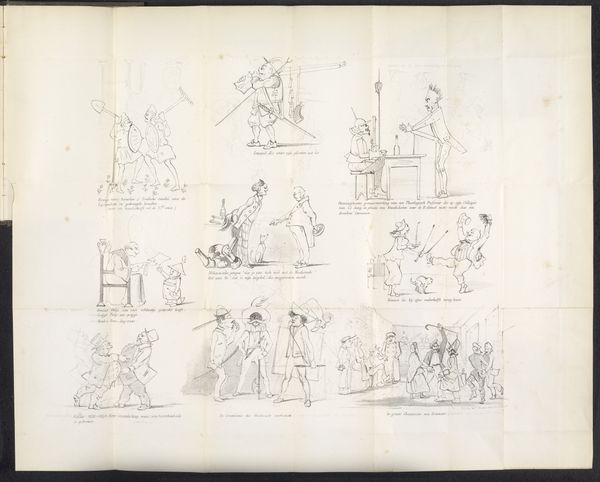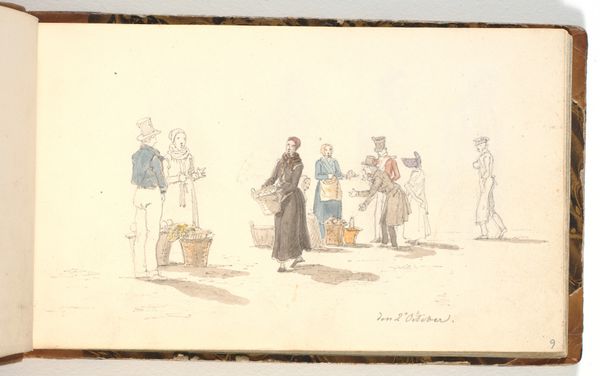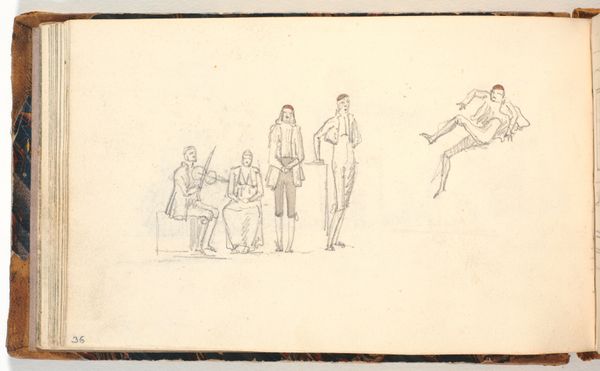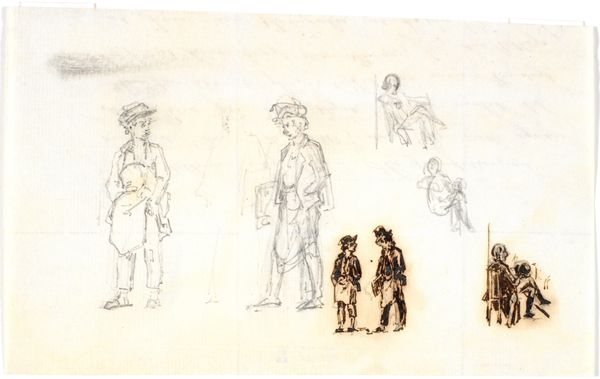
drawing, paper, pencil
#
drawing
#
narrative-art
#
figuration
#
paper
#
coloured pencil
#
romanticism
#
pencil
#
line
#
genre-painting
Dimensions: 107 mm (height) x 179 mm (width) (bladmaal)
Curator: Here we have Martinus Rørbye's "Interiør med dansende figurer," dating back to 1832. It’s a pencil and colored pencil drawing on paper. Editor: My initial reaction is a sense of wistful melancholy. Despite the dancing figures, there's an unfinished quality, almost ghostly. The lightness of the lines and the muted tones contribute to a dreamlike atmosphere, a captured memory rather than a lively scene. Curator: That sense of "captured memory" resonates with me. This work exists in the context of burgeoning nationalism across Europe and Denmark grappling with its identity following the Napoleonic Wars. The artwork, a sketch almost, conveys this search. Rørbye later in his career, also captured images in cultures to its east, and in so doing brought new views of class, power and identity. Editor: Fascinating. I'm drawn to the subtle repetition of circular forms. The hanging vessels—are they gourds, perhaps?—echo the curves of the dancers' arms and skirts, creating a visual rhythm. I wonder if these repeated circular motifs are intended to signify community, cycles of life, even eternity? Curator: Potentially. Also we cannot discard the notion of performance that's deeply ingrained within certain social circles—class played an important role, with dancing lessons symbolizing both sophistication and aspiration. Think of a need to see oneself performing appropriately to be seen as valuable by society. This is especially poignant considering the societal expectations placed upon women within those spaces. Editor: That performance aspect rings true when considering social expectation. But there's a vulnerability in this depiction. These are unfinished figures, existing on a liminal space of the paper. It’s as if the act of dance is revealed, only for an instance in its movement. Is that where the dream lies? Curator: I think so, especially given the historical understanding of women in social life. Even a sense of forced expectations placed onto people within specific genders during the time. A ghost of dance, just a memory of a touch. Editor: Rørbye's sketch truly offers an intriguing view, a study of both societal forces, a ghostly dance—a captivating insight into memory and fleeting moment. Curator: Yes, an important point, how this seemingly light sketch allows us to understand a moment in time as it interlocks with cultural weight.
Comments
No comments
Be the first to comment and join the conversation on the ultimate creative platform.
